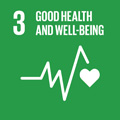- Docente: Paola Dal Monte
- Credits: 2
- SSD: MED/07
- Language: Italian
- Teaching Mode: In-person learning (entirely or partially)
- Campus: Bologna
- Corso: First cycle degree programme (L) in Dietistic (cod. 8470)
-
from Mar 02, 2026 to Apr 09, 2026
Learning outcomes
The student should recognize main characteristics of the distinct groups of microorganisms, the principal diagnostic methods for identification of microorganisms, the antimicrobial therapy, pathogenetic mechanisms employed by microbes and host response. The student should also have specific knowledge on food-borne diseases, and on important blood-borne infections such as viral hepatitis and HIV infection.
Course contents
Characteristics of microorganisms: bacteria, viruses, fungi, protozoa
Mechanisms of pathogenesis and host defenses. Gut microbiota.
Principle of microbiological diagnosis.
Antimicrobial drugs and mechanisms of antibiotic resistance. Probiotics.
Generalities about transmission of foodborne diseases.
Bacterial foodborne infections, including zoonosis and ifection that are transmitted human to human.
Viral gastroenteritis: norovirus, rotavirus.
Parasitic infections of the intestinal tract transmitted by oro-fecal route. Other foodborne infections caused by parasites (toxoplasmosis).
Viral hepatitis caused by HAV, HBV, HCV, HDV and HEV.
Readings/Bibliography
Microbiologia e Microbiologia Clinica -per i corsi di laurea in professioni sanitarie-R. Cevenini, V. Sambri, Ed Piccin
Teaching methods
Lectures with the help of a video projector and PC
Assessment methods
Registration for the exam session is mandatory through Alma Esami and takes place in a single examination for the Integrated Course of MICROBIOLOGIA PATOLOGIA GENERALE E IGIENE (codice 71411).
The final assessment consists of an oral exam, during which the student will primarily discuss a topic from the course syllabus. During the interview, additional questions will be asked to assess the student’s depth of understanding of both the chosen topic and other topics covered in the program, their critical ability to make connections between different areas of knowledge, and their overall comprehension of the subjects addressed during lectures.
The exam will be considered passed if the student demonstrates sufficient knowledge of each topic.
Students who show an integrated understanding of the course topics, combined with critical use of this knowledge, the ability to establish connections, and a mastery of both expression and subject-specific terminology, will be awarded higher marks. The final grade for the Integrated Course will be calculated as the weighted mathematical average based on the course credits.
Final grade scale:
- 18–19: Limited preparation on a very small number of topics covered in the course; analytical skills emerging only with help from the examiner; overall correct language use.
- 20–24: Preparation on a limited number of topics; independent analytical ability limited to purely operational questions; correct language use.
- 25–29: Broad preparation across many course topics; ability to make autonomous choices in critical analysis; proper use of technical terminology.
- 30–30L: Substantially comprehensive preparation on all course topics; autonomous critical analysis and ability to make interdisciplinary connections; full mastery of terminology, argumentation, and self-reflection.
Students with learning disabilities or temporary/permanent impairments are encouraged to contact the dedicated support office as soon as possible (https://site.unibo.it/studenti-con-disabilita-e-dsa/en/for-students) to agree on appropriate compensatory measures. Requests must be submitted in advance (at least 15 days before the exam date) to the instructor, who will evaluate the suitability of such measures in light of the course learning objectives.
Teaching tools
In-class lectures will be supported by Power Point slides. Slides will be online available at the end of each lecture. The teaching material is available at
https://virtuale.unibo.it by using student's username and password
Office hours
See the website of Paola Dal Monte
SDGs

This teaching activity contributes to the achievement of the Sustainable Development Goals of the UN 2030 Agenda.
